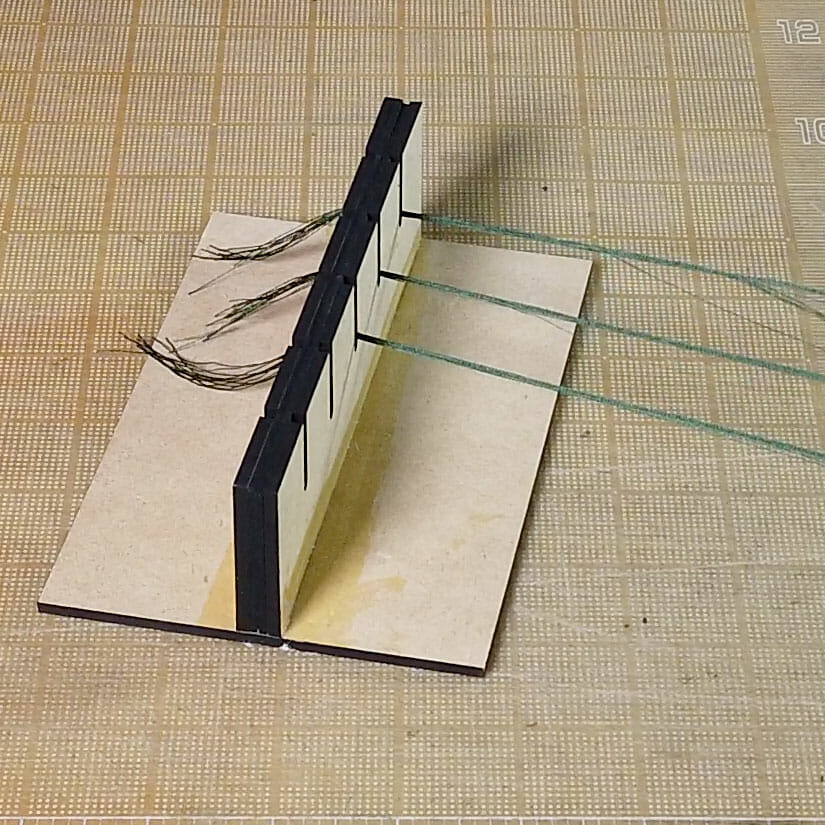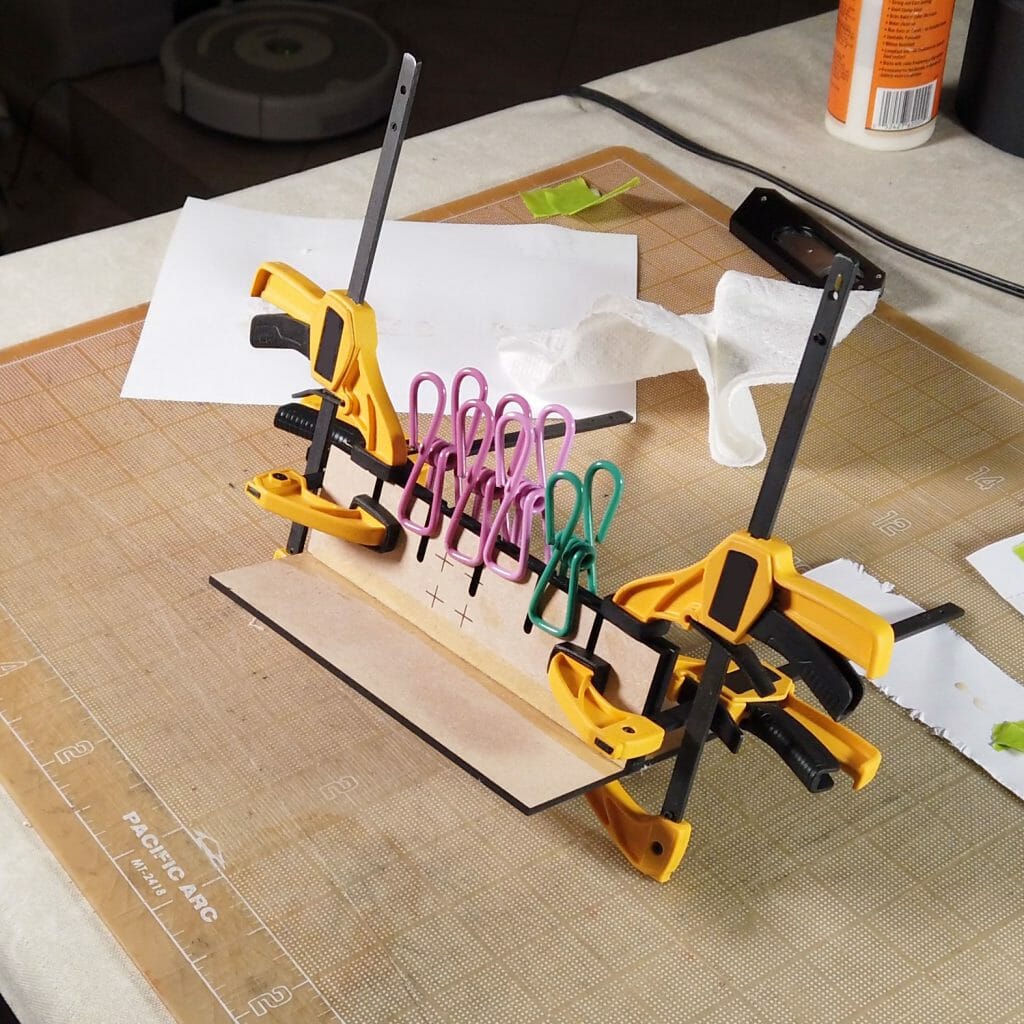Lasering Cactus Leather
Trying out cutting, engraving, painting and stitching cactus leather with a simple card case mini-project.
Continue readingTrying out cutting, engraving, painting and stitching cactus leather with a simple card case mini-project.
Continue readingScouting logo fleur-de-lis pins made with the scraps from the challenge coin project.
Continue readingI made these walnut “challenge coins” for my niece to hand out at her Eagle Scout Court of Honor.
Continue reading3D printed, hand-painted Kokeshi (a traditional style of Japanese doll) styled on my friend Tanya, who is the keeper of her family’s cultural traditions for her nieces.
Continue readingCeltic key pattern pins made from maple hardwood inlaid with walnut.
Continue readingI made a custom laser-cut clear acrylic caddy for set of art markers.
Continue readingDice reliquaries from laser-cut hardwood ply.
Continue reading
This is a quick, simple tool to assist when separating skeins of kumihimo (or embroidery) floss into working clusters with the desired number of strands. The upright is a sandwich of a piece of EVA foam between two pieces of 1/4″ stock (MDF here but, something like Baltic birch ply or acrylic should work, too). The EVA is sliced with a razor blade in the middle of each channel. Then, just glue it all together with wood glue. Some clamping is likely required while it dries.

It is probably best to clamp it down to a table when using. Knot the end of the skein/bundle of strands and, slip it into the cut in the EVA. That should keep the end in place while you separate the full length.